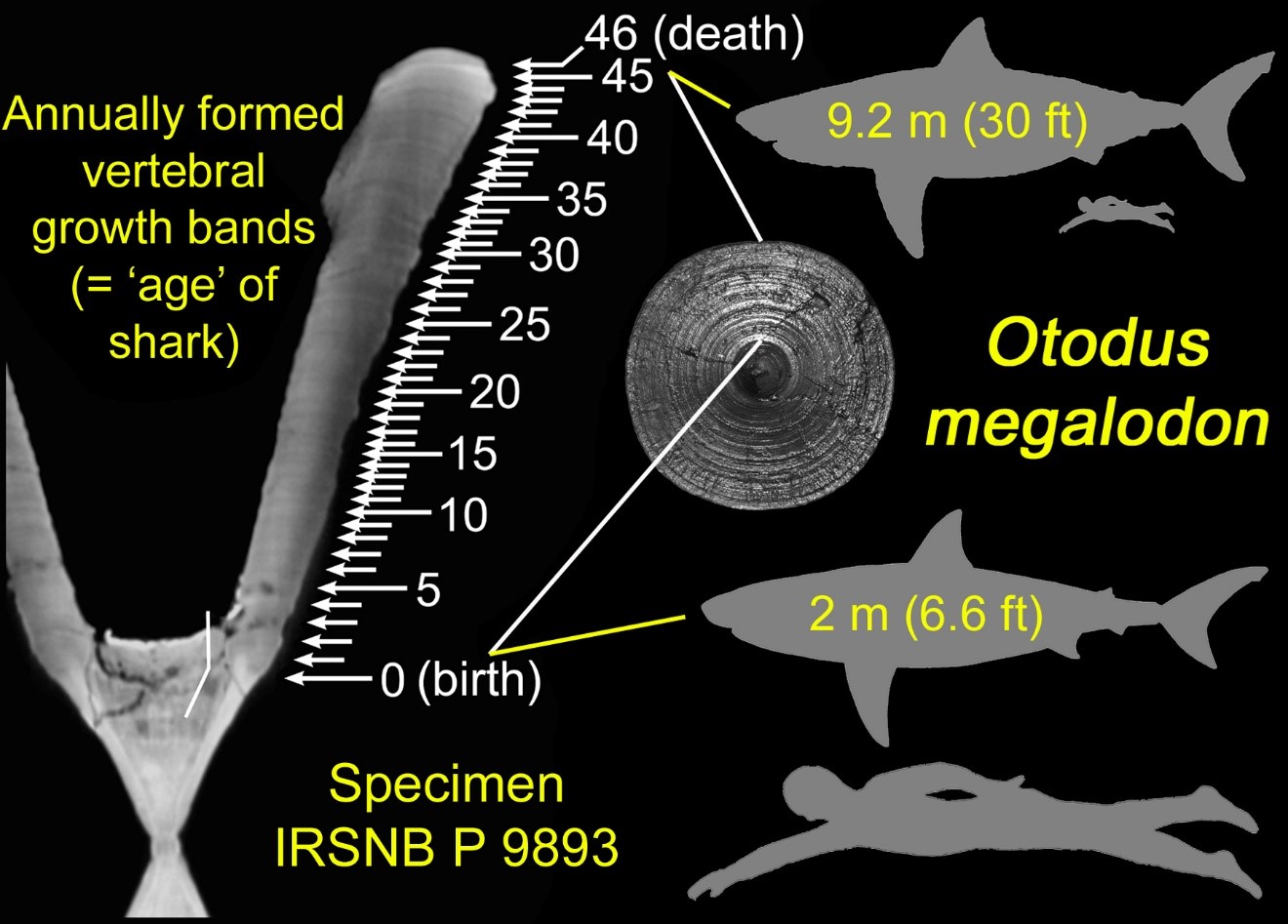 Putative annual growth bands in a vertebra of the extinct megatooth shark Otodus megalodon along with hypothetical silhouettes of the shark at birth and death, each compared with size of typical adult human. The vertebral specimen is housed in the Royal Belgian Institute of Natural Sciences in Brussels. (DePaul University/Kenshu Shimada)
Putative annual growth bands in a vertebra of the extinct megatooth shark Otodus megalodon along with hypothetical silhouettes of the shark at birth and death, each compared with size of typical adult human. The vertebral specimen is housed in the Royal Belgian Institute of Natural Sciences in Brussels. (DePaul University/Kenshu Shimada)A new study shows that the gigantic Megalodon or megatooth shark, which lived nearly worldwide roughly 15-3.6 million years ago and reached at least 50 feet in length, gave birth to babies larger than most adult humans. This latest research shedding light on the reproductive biology, growth and life expectancy of Megalodon, formally called
Otodus megalodon, appears in the international journal, "Historical Biology."
Although Otodus megalodon is typically portrayed as a super-sized, monstrous shark in novels and films such as the 2018 sci-fi film “The Meg,” scientific data support a more modest but still impressive estimate of about 50 feet for the presently known largest individuals. The study indicates that, from the moment of birth, Megalodon was already a big fish, notes Kenshu Shimada, a paleobiologist in the College of Science and Health and lead author of the study. Co-authors are Matthew Bonnan, Stockton University, New Jersey; and Martin Becker and Michael Griffiths, William Paterson University, New Jersey.
“As one of the largest carnivores that ever existed, deciphering such growth parameters of O. megalodon is critical to understand the role large carnivores play in the context of the evolution of marine ecosystems,” Shimada says.
Otodus megalodon has a rich fossil record, but its biology remains poorly understood, like most other extinct sharks, because the cartilaginous fish is primarily known only from its teeth. Nevertheless, some remains of gigantic vertebrae are known.
The study, "Ontogenetic growth pattern of the extinct megatooth shark
Otodus megalodon—implications for its reproductive biology, development, and life expectancy,” will appear in the forthcoming issue of "Historical Biology" and
is available online. This collaborative work was made possible through financial support from the National Science Foundation to Kenshu Shimada (Award Number 1830858) and to Michael Griffiths and Martin Becker (Award Number 1830581).